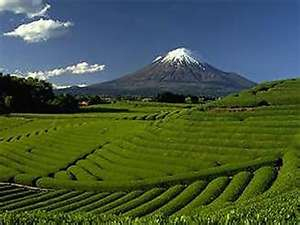 As no stranger to earthquakes and tsunamis, Japan has long mastered the art of overcoming natural disasters.
As no stranger to earthquakes and tsunamis, Japan has long mastered the art of overcoming natural disasters.
Sophisticated engineering has spawned shock-resistant construction and meticulous preparedness manuals. Even an elementary school student knows what to do in a crisis.
But, the latest jolt might not go away so easily. The tsunami that smashed the Fukushima Daiichi power plant caused radiation leakages that contaminated agricultural products so that Japanese produce was banned in local and international markets.
A swathe of tea-making regions, including parts of Tochigi, Chiba and Kanagawa prefectures as well as the whole of Ibaraki, were included within the ban, according to the Ministry of Health, Labor and Welfare. The ban was followed by a ban on milk products from the regions, the milk coming from cows that consumed the green tea.
Akihiko Takayama, an agriculture agency official from Tochigi prefecture, said total losses in the agricultural sector due to the direct and indirect impacts of the multiple disasters in the region has reached ¥5 billion (US$62.3 million).
“Hundreds of millions of yen have been lost due to negative news about our products,” he said.
Before the green tea ban, the central government had limited distribution of spinach and kakina green leaves, which had reportedly been contaminated with radioactive material.
Fears of consuming contaminated products have also impacted the sales of other vegetables and fruits from Tochigi. Sales of strawberries, which are grown inside greenhouses and free from radioactivity, have also dropped, pushing growers to sell their products for less than those from other regions.
“Unemployment could be the next concern,” Takayama said.
He said the multiple disasters are so complicated that the central government could not take direct action to anticipate the impact of the nuclear disaster.
“It took one month before the central government instructed us to burn contaminated spinach in our region in an incinerator,” he said.
The government has yet to determine what to do with those remains, as well as sludge from the waste management facility, as it cannot be thrown away without proper measures.
It has also yet to provide direction regarding contaminated soil from the first days of the nuclear disaster. About 193 kilometers from Fukushima, the soil in parts of Tochigi has been contaminated with airborne cesium to a depth of five centimeters. The soil has been removed and isolated in a facility.
These many devastating and enduring effects have caused the public to grow skeptical of nuclear power plants. Several local governments and residents have taken to the streets to oppose the re-operation of several nuclear reactors in the country.
But, switching to a new power source is not easy for the resource-poor country.
Before the Fukushima accidents, an OECD report stated that Japan relied on nuclear power for more than a quarter of the total electricity in the country.
Satoru Satoh, the Japanese Foreign Affairs Ministry’s press secretary, said the Japanese government had difficulty assessing the damage at Fukushima during the first days of the disaster because all the machines at the plant had been shut down after the radio-active leakages began.
“We did not expect the extraordinary impact of the radiation,” he said.
Satoh said the government now has a clear plan to overcome the nuclear crisis.
It has laid out plans for stabilization, including a plan to develop better reactor cooling systems and to revise safety standards at nuclear power plants across the country.
It has also arranged to establish a committee to assess the amount of compensation that residents could obtain from the disasters.